Kitchen Extension Sliding Doors: A Complete Buyer’s Guide
Table of Contents
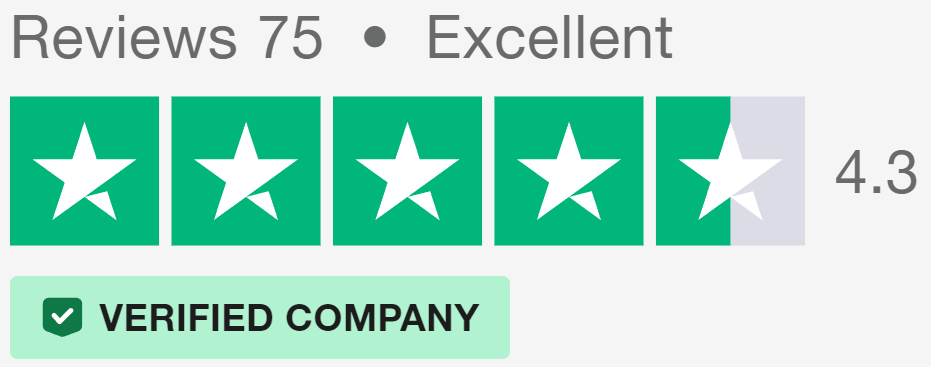
Getting Started with Kitchen Extension Sliding Doors
Modern home extensions have sparked a surge in demand for glazing that brings gardens closer to our daily lives. Large-format glass panels mounted on precision-engineered tracks now dominate the market for kitchen renovations, offering practical benefits beyond their striking looks.
Design Options for Your Extension
Sliding mechanisms vary widely based on your open plan kitchen requirements. Single-track systems suit smaller openings up to two metres, while multi-track configurations can span entire walls. The choice between inline sliding (where panels move in parallel) and slide-and-stack systems (where panels collect at one end) and other types of sliding doors often depends on your available wall space and preferred opening style.
Glass Types and Tinting
Modern kitchen extension sliding doors incorporate advanced glazing technology to combat heat loss and solar gain. Double-glazed units filled with argon gas provide excellent thermal efficiency, while low-emissivity coatings reflect heat back into your kitchen during winter months. Solar control glass helps prevent overheating in south-facing extensions without darkening the space excessively.
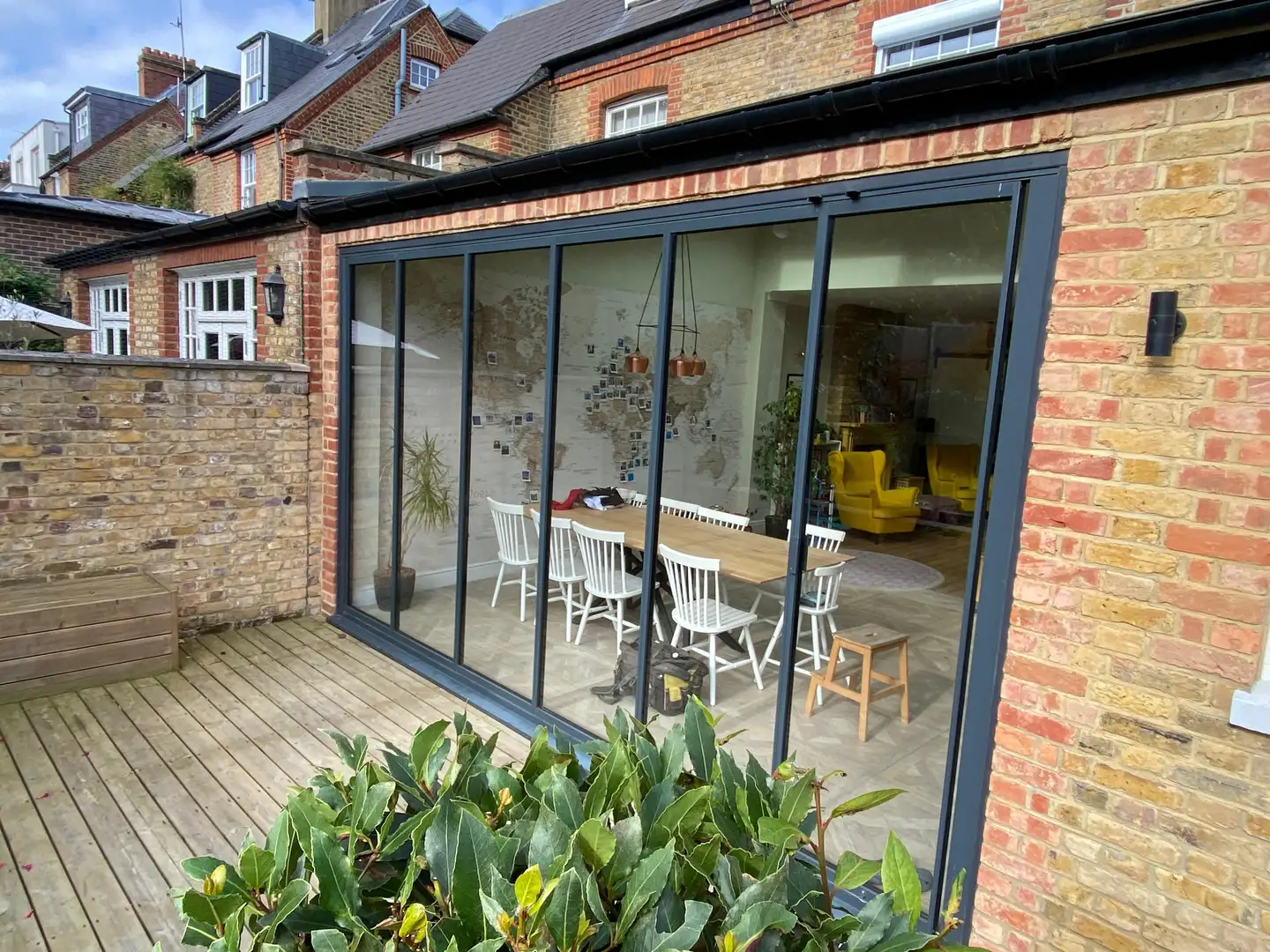
Frame Options and Sizes
Sliding glass doors differ markedly in their frame construction. Aluminium frames offer slim sightlines and robust performance, available in hundreds of RAL colours to match your kitchen scheme. For budget-conscious projects, uPVC sliding doors provide good insulation value and low maintenance, though their frames tend to be bulkier than metal alternatives.
Contemporary home design often favours minimal frame profiles that blur the boundary between inside and out. The structural properties of different materials directly influence frame thickness – aluminium’s strength permits slimmer sections than uPVC, though both materials can support large glass panels effectively. Kitchen extension patio doors made from aluminium typically feature frames measuring half the width of equivalent uPVC models.
Making the Right Choice
The perfect sliding door system meshes with both your kitchen’s function and form. North-facing extensions might prioritise thermal performance and light transmission, while busy family kitchens could benefit from robust hardware and easy-clean glass coatings. Factor in your budget, maintenance preferences, and local planning requirements when weighing up different options.
Smart Space Planning for Sliding Door Installations
Planning a kitchen makeover around large glazed panels requires careful thought about how you’ll use the space in different seasons. Extension sliding doors work best when they’re integrated into the overall design from the start, rather than being treated as a separate element.
Making the Most of Natural Light
Careful positioning of kitchen extension sliding doors can flood your space with natural brightness. Wide glass panels create dramatic shadows as the sun moves throughout the day, throwing interesting patterns across worktops and floors. North-facing extensions particularly benefit from full-height glazing, which captures precious morning and evening light. Glass specification plays a vital part too – modern coatings can reduce glare on cooking surfaces without blocking the sun’s warmth.
The amount of light affects how you might arrange your kitchen diner layout. Morning sun streaming through east-facing doors might make breakfast time more pleasant, while western glazing could light up evening meals. Clear sightlines to the garden add depth to smaller spaces, making compact extensions feel more generous.
Creating Clear Sightlines
Kitchen extension patio doors shine when they frame specific garden features or views. A thoughtfully positioned breakfast bar can turn everyday meals into an outdoor dining experience, even when the doors are closed. Long views through the house work particularly well when sliding doors line up with internal doorways or corridors, drawing the eye through the space.
Views and Privacy
Strategic placement of screens, plants or partial walls helps maintain privacy without blocking light. Frosted glass sections or carefully positioned kitchen units can shield food preparation areas from neighbours’ windows while keeping the main living space bright and open.
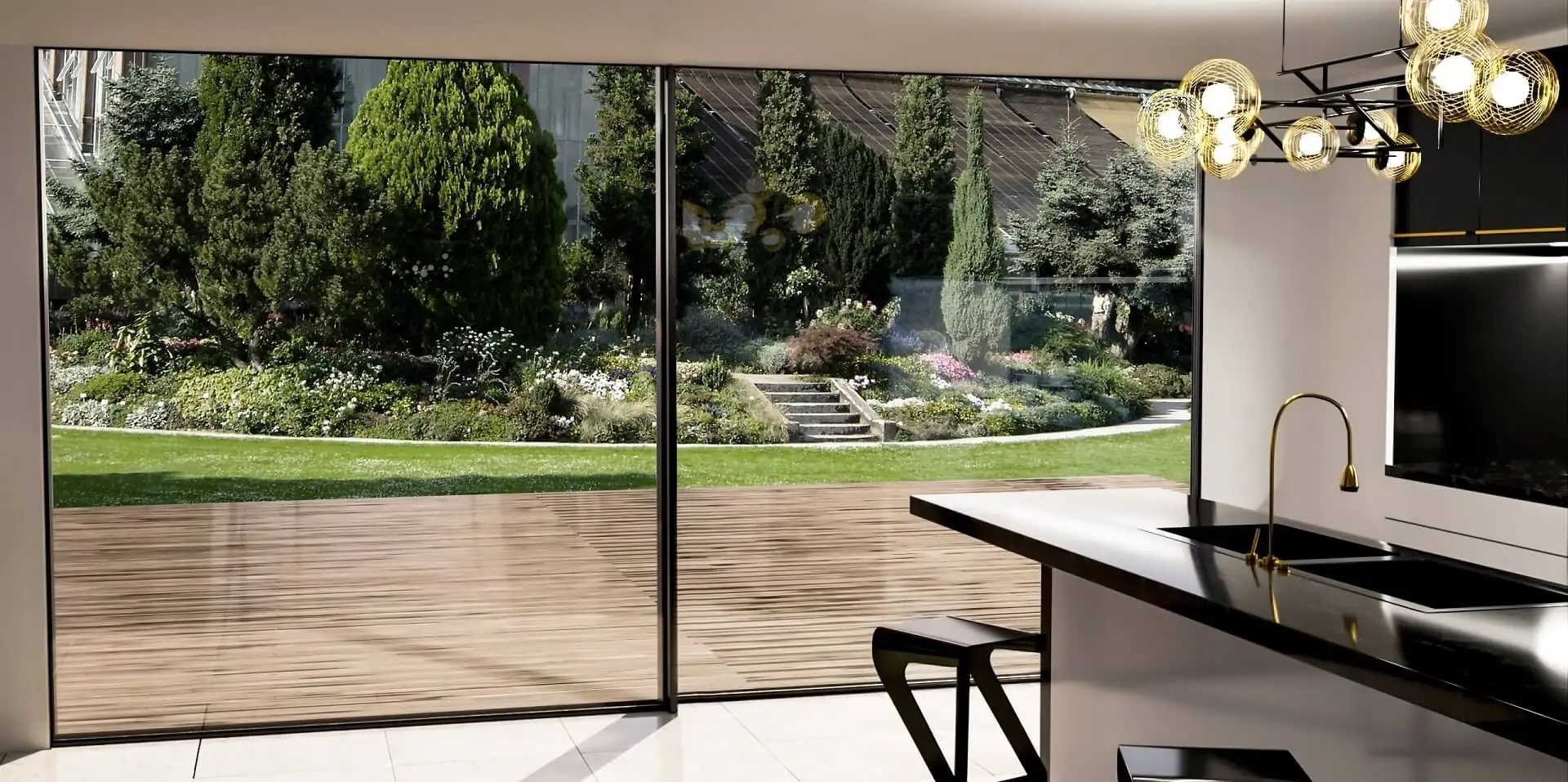
Furniture Layout Ideas
A kitchen diner extension demands smart furniture placement to make the most of sliding doors. Positioning dining tables parallel to the glazing creates a natural flow between cooking and eating zones. Space-saving doors that slide rather than swing mean you can place furniture closer to the opening without blocking access.
The cooking zone works well when positioned perpendicular to doors, allowing the cook to enjoy garden views while preparing food.
Working with Internal Spaces
Long sight lines through your home require careful planning of internal sliding doors too. Glass panels between food prep and dining areas help contain cooking aromas while maintaining visual links. Statement lighting mounted above islands or dining tables creates appealing reflections in the glass after dark, turning sliding doors into dramatic mirrors that bounce light back into the room.
Moving from existing spaces into new extensions feels natural when floor levels match exactly. Low-threshold sliding door tracks can sit flush with flooring, removing trip hazards and creating smooth access between indoor and garden spaces. This detail particularly helps when carrying hot dishes outside or bringing shopping in from the car.
Technical Aspects of Kitchen Extension Sliding Doors
The mechanical components in kitchen extension sliding doors need to work flawlessly throughout years of daily use. High-quality running gear, precision tracks, and robust seals form the foundation of a reliable system that stands up to busy family life.
Track Systems and Operation
Modern kitchen extension sliding doors run on sophisticated track systems engineered for smooth movement. Double- and triple-track designs allow panels to glide past each other with minimal effort, despite their weight. The best aluminium sliding doors feature stainless steel wheels housed in sealed units, preventing debris from jamming the mechanism.
Proper installation of tracking systems prevents common issues like sticking or derailing. Adjustable rollers let installers fine-tune the door position, ensuring panels hang straight and seal properly when closed. Regular cleaning of tracks and periodic lubrication keeps doors running smoothly – a five-minute job that makes a real difference to daily operation.
Multi-point locking mechanisms integrated into the tracks provide extra rigidity when doors are closed. Secure patio doors resist forced entry while remaining easy to operate from inside. Some systems include soft-close dampers, similar to kitchen drawers, which prevent accidental slamming.
Threshold Design
Kitchen extension patio doors often feature low-threshold tracks that sit almost flush with floor levels. These shallow channels, sometimes just 15mm high, remove trip hazards while maintaining good weather resistance. Drainage channels built into the threshold prevent rainwater pooling, while brush seals stop drafts without creating friction.
The threshold design strongly influences how well doors keep out wind and rain. Rebated sills provide extra protection at the bottom edge, particularly useful in exposed locations. Some manufacturers offer ramped threshold options for completely step-free access, though these might need additional drainage features.
Ventilation
Energy efficient patio doors must balance air-tightness with proper ventilation. Trickle vents built into the frame provide background airflow without compromising security. These small openings help prevent condensation while maintaining comfort levels in your kitchen.
Some kitchen extension sliding doors incorporate integral ventilation panels that open independently of the main glass. These smaller openings prove particularly useful in summer, letting you control temperature and cooking odours without sliding the whole door open. Built-in insect screens on ventilation sections keep flies out during food preparation.
Advanced Sealing Technology
Double glazing alone isn’t enough for excellent thermal performance. As an architectural feature, sliding doors need sophisticated sealing systems around their edges. Modern compression seals expand when doors close, filling any tiny gaps. Special corner pieces ensure continuous weather protection where vertical and horizontal seals meet.
Environmental Control
High-performance gaskets and thermal breaks in frames help kitchen extension sliding doors achieve impressive insulation values. Multi-chambered profiles trap air for better insulation, while warm-edge spacer bars between glass panes reduce heat loss at the edges. These technical features work together to prevent cold spots near the glazing, making the whole kitchen more comfortable to use year-round.
Smart glass coatings manage solar gain effectively. Low-emissivity layers bounce heat back into the kitchen during winter while limiting unwanted warmth in summer. Some energy-efficient doors now include electrochromic glass that darkens automatically in bright sunlight, protecting work surfaces from glare without blocking views.
Kitchen Extension Sliding Door Styles
Modern kitchen extension sliding doors come in a striking array of designs that put a fresh spin on traditional patio door styling. Glass technology has advanced rapidly, enabling larger panels and clearer views than ever before.
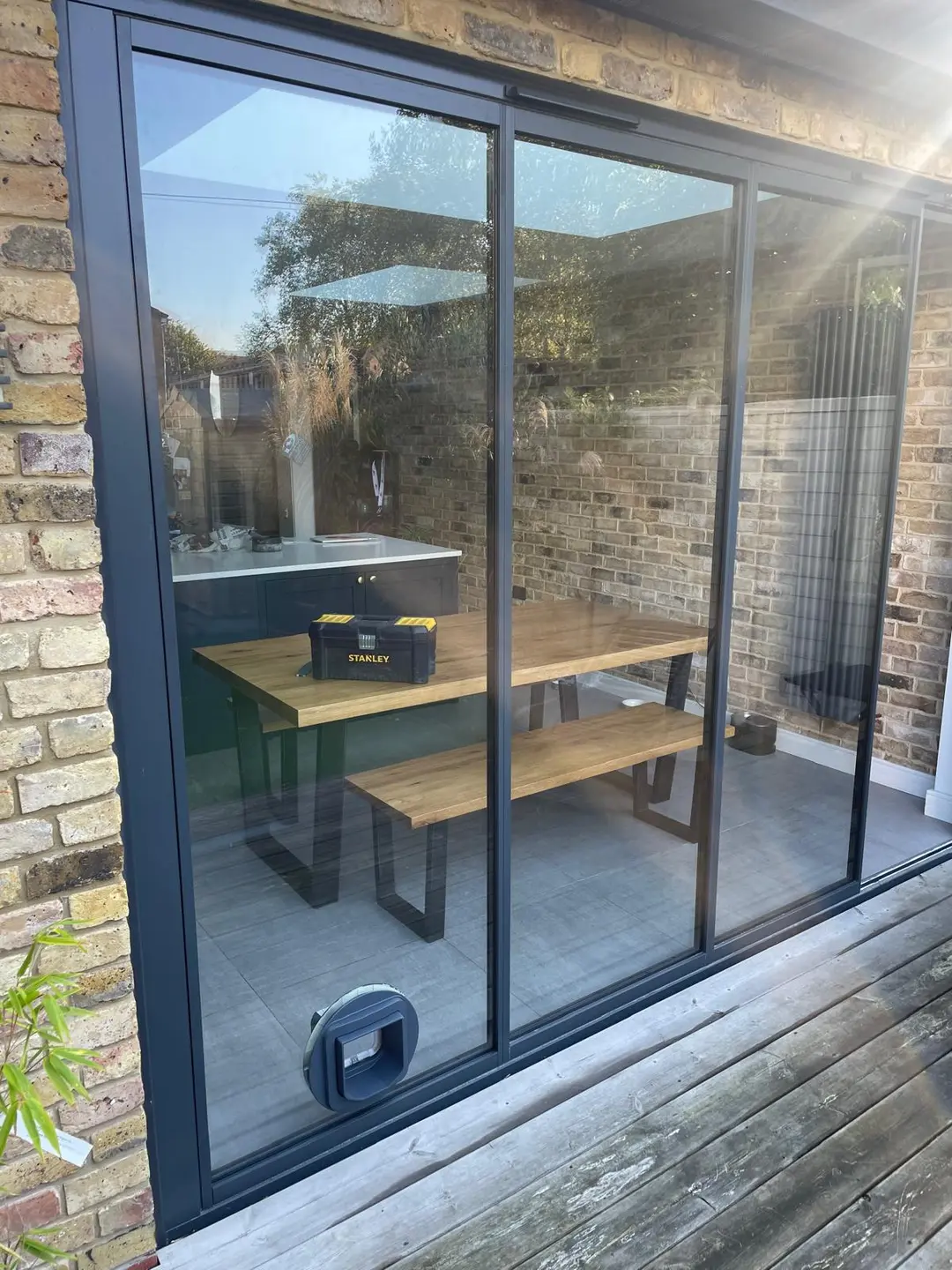
Modern Minimal Frames
Kitchen expansion projects often showcase ultra-slim frames that make the most of available light. These minimal profiles, sometimes less than 30mm wide, create clean lines that suit contemporary architecture. Where older systems needed thick frames for stability, new manufacturing techniques allow kitchen extension sliding doors to support huge glass panels with remarkably thin aluminium sections.
Large glass doors make particularly strong statements when paired with dark frame finishes. Deep greys and blacks create bold outlines around each panel, turning the glazing into a defining feature of your extension. Lighter frames in white or cream produce a softer look that works well with classic kitchen styles.
Natural light floods through floor-to-ceiling glass walls, creating bright, welcoming spaces that change character throughout the day. Kitchen extension patio doors with minimal frames let you capture these lighting effects fully, whether you’re cooking breakfast or hosting evening gatherings.
Glass Panel Configurations
The arrangement of glass panels strongly influences how kitchen extension sliding doors operate in daily use. Two-panel systems suit smaller openings, while three or four panels allow for wider apertures. Clever panel arrangements let you open specific sections for ventilation while keeping others closed – useful when cooking generates steam or heat.
Some systems allow panels to slide independently, so you might open just the kitchen end while keeping the dining area closed. This flexibility proves particularly valuable in British weather, where you might want partial shelter from wind while maintaining garden access.
Handle and Hardware Choices
Slim handle designs complement minimal frame profiles without compromising usability. Pop-out handles sit flush when not in use, maintaining clean lines across closed doors. These neat fittings work well in busy kitchens where you don’t want protruding hardware to catch clothing or knock against plates.
Multipoint locking systems hidden within the frame keep kitchen extension sliding doors secure without cluttering their appearance.
Material and Finish Options
Frame materials need careful selection based on panel weight and opening size. Premium systems use reinforced aluminium profiles that resist twisting while supporting heavier glass units. Steel reinforcement inside key components adds rigidity where needed, preventing sagging over time.
Surface finishes range from powder-coated colours to anodised effects that resist scratching and fading. Marine-grade treatments provide extra protection in coastal areas where salt air might otherwise damage standard finishes. These durable coatings keep frames looking fresh with minimal maintenance beyond occasional cleaning.
Glass Specifications
Modern manufacturing allows for incredibly pure glass that avoids the slight green tint seen in older units. Special coatings control heat and glare without introducing obvious colour effects, maintaining natural light levels while improving comfort. Self-cleaning glass treatments, though slightly more expensive initially, reduce maintenance needs by breaking down dirt between manual cleans.
Anti-condensation coatings help prevent misting on cold mornings, particularly useful when cooking steam meets cool glass surfaces. Some systems also offer acoustic glass that reduces noise transmission – helpful if your garden backs onto a busy area or you’re planning lots of outdoor entertaining.
Making Sliding Doors Work in Your Kitchen
Kitchen extension sliding doors need regular attention to perform at their best year-round. Small maintenance tasks, done regularly, prevent bigger issues from developing and keep operation smooth.
Temperature Control
Modern kitchen extension sliding doors include sophisticated features to manage heat and cold. Thermal breaks in frames stop heat escaping through the metal, while multiple glass panes trap insulating air or gas. These technical elements work together to maintain comfortable temperatures without relying heavily on heating or cooling systems.
Winter mornings often bring condensation challenges to patio access points. The temperature difference between inside and out can cause moisture to collect on glass surfaces. Anti-condensation coatings help prevent this issue, while proper ventilation removes humid air before it can settle on cold surfaces.
In summer, solar gain through kitchen extension patio doors might increase room temperature uncomfortably. Advanced glass coatings reflect excess heat while letting light through. Shading options like external blinds or well-placed trees help manage bright sunlight without blocking views entirely.
Security Features
A rear extension with large glazed areas needs robust security measures that don’t compromise convenience. Kitchen extension sliding doors feature multi-point locking mechanisms that engage at several points along the frame. Modern systems include anti-lift devices preventing panels from being forced upward out of their tracks.
Child safety features prove particularly valuable in family kitchens. Soft-close mechanisms prevent trapped fingers, while lockable handles let you control access to outside areas. Some systems include intermediate locking positions, allowing secure ventilation through a small gap.
Secondary locks provide extra peace of mind without making daily operation complex. These additional bolts engage automatically when you lock the main mechanism, securing panels at multiple points around their edges.
Advanced Security Technology
Digital locks integrate with home security systems, letting you check door status remotely. Some kitchen extension sliding doors now include break-glass sensors and movement detectors linked to alarm systems. These smart features alert you to potential issues while remaining completely hidden from view.
Keeping the Space Fresh
Proper ventilation helps control cooking odours and prevent condensation build-up. Trickle vents built into frames provide constant background airflow without compromising security. These small openings work particularly well when paired with kitchen extraction systems.
Steam from cooking affects air quality quickly in enclosed spaces. Strategic positioning of kitchen extension sliding doors relative to cooking areas helps manage this issue. Cross-ventilation between doors and windows clears air efficiently when needed.
Year-Round Maintenance
Regular cleaning of tracks and mechanisms keeps sliding panels moving freely. Salt and grit from winter weather can accumulate in running tracks, while summer dust might stick to lubricants. Simple monthly checks catch minor issues before they become problems.
Seasonal adjustments might be needed as temperature changes cause materials to expand and contract slightly. Most systems include adjustment points letting you fine-tune panel alignment and sealing pressure. Professional servicing once yearly helps spot wear before it impacts performance.
Weather Protection
High-quality brush seals around each panel block drafts effectively. These soft barriers flex as doors move, maintaining protection without creating resistance. Modern sealing systems include special corner pieces ensuring continuous weather protection where vertical and horizontal seals meet.
Protected porch areas outside kitchen extension sliding doors help manage weather effects. Even small overhangs reduce rain exposure while providing useful shelter when arriving home with shopping. Well-designed drainage channels in thresholds direct water away from interior spaces efficiently.
Practical Tips for Door Selection
Kitchen extension sliding doors need careful planning to match your daily routines and lifestyle. Small details in design and operation can make a big difference to how well the space works over time.
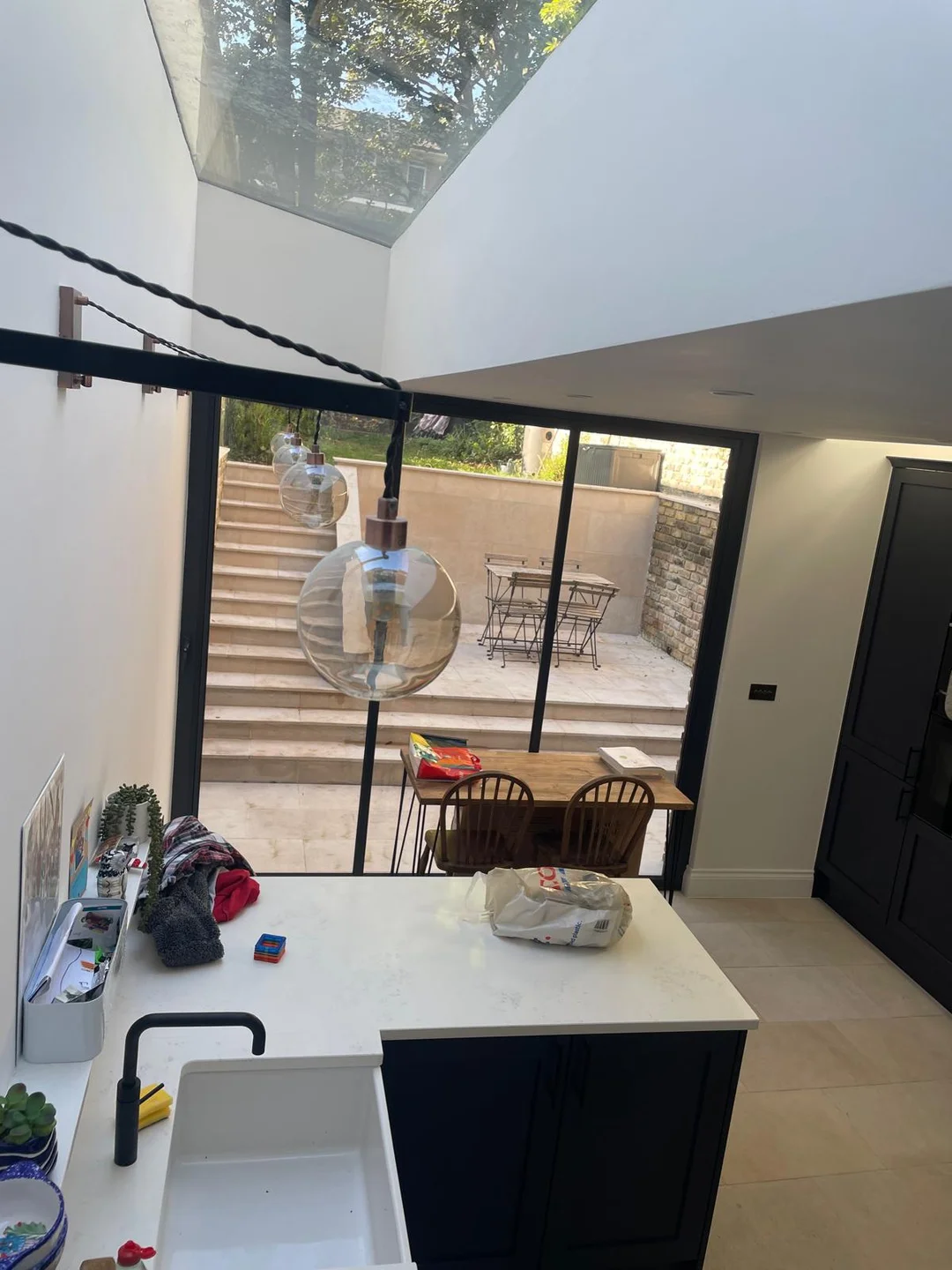
Size and Weight Factors
Large glass panels look striking but bring practical challenges. Kitchen extension sliding doors weighing over 200kg need robust support systems and careful installation. Heavier panels might require motorised operation – a valuable extra for elderly users or anyone who might struggle with manual handling.
Steel-look frames provide strength without excessive bulk, supporting wider glass panels than standard aluminium systems. These distinctive profiles add industrial character while performing technically well. Panel size limits vary between manufacturers – some modern systems can handle individual panes up to three metres wide.
The weight of kitchen extension patio doors puts substantial stress on supporting structures. Load-bearing calculations must account for both dead weight and dynamic forces as doors move. Professional installation ensures proper support and smooth operation throughout the system’s life.
Space-Saving Benefits
Kitchen extension ideas often focus on making rooms feel bigger. Sliding systems take up minimal floor area compared to hinged doors, freeing up space for furniture or circulation. When open, panels stack in parallel rather than swinging into usable areas.
Careful planning of panel arrangements saves space in surprising ways. Kitchen extension sliding doors can include specific panels for daily access, letting larger sections stay closed when full width isn’t needed. This approach proves particularly useful in changeable weather, providing quick garden access without opening the entire system.
Frame Colour Selection
Paint finishes for kitchen extension sliding doors must withstand daily wear and changing temperatures. Premium powder coating provides better durability than wet paint, resisting chips and scratches from regular use. Marine-grade finishes offer extra protection in coastal areas where salt air accelerates corrosion.
Colour choice impacts more than appearance – darker frames absorb more heat, potentially affecting thermal performance in sunny locations. Light colours reflect heat better but show dirt more readily. Mid-tones like anthracite grey offer practical middle ground between these extremes.
Brown patio doors in darker finishes create strong visual frames for garden views while hiding dirt and fingerprints effectively. These practical finishes need less frequent cleaning than lighter colours, saving time on maintenance.
Material Performance Factors
Frame materials determine long-term performance and maintenance needs. Aluminium offers excellent strength-to-weight ratios and won’t rust, though it conducts heat more readily than uPVC. Thermal breaks within metal frames reduce heat transfer effectively when properly designed.
Regular cleaning keeps surfaces looking fresh – different finishes need specific approaches. Textured surfaces hide minor scratches better than smooth ones but might trap dirt more easily. Anti-bacterial coatings available for handles and touch points provide extra hygiene protection in busy kitchens.
Installation Requirements
Professional fitting ensures kitchen extension sliding doors work properly from day one. Precise levelling of tracks and careful alignment of panels prevents issues with operation and weather sealing. Small errors in installation can compound over time, leading to sticking panels or poor thermal performance.
Preparation work often includes strengthening existing structures to support new door systems. Steel beams or reinforced concrete lintels distribute loads safely into foundations. Building regulations specify minimum thermal performance standards – modern systems easily exceed these requirements when properly installed.
Thought about access for installation helps avoid problems. Kitchen extension sliding doors often arrive as large pre-assembled units needing clear paths to their final position. Some sites might need temporary removal of fences or gates to get materials in place safely.
We’d Love to Help You
Vision Glass Doors is a designer, manufacturer, and installer of premium door systems. We are a family run business with over 20 years’ experience and 5,000 installations across the UK.
Our leading range of door systems include Ultra Slim – Slide and Turn Doors, Slimline Sliding Patio Doors and Frameless Glass Doors. Suitable for various internal and external applications, they are applicable to residential and commercial projects.
Click Quick Quote Online for a free quotation within 24 hours. Alternatively, call or email us on 01582 492730 or at info@visionglassdoors.co.uk.

